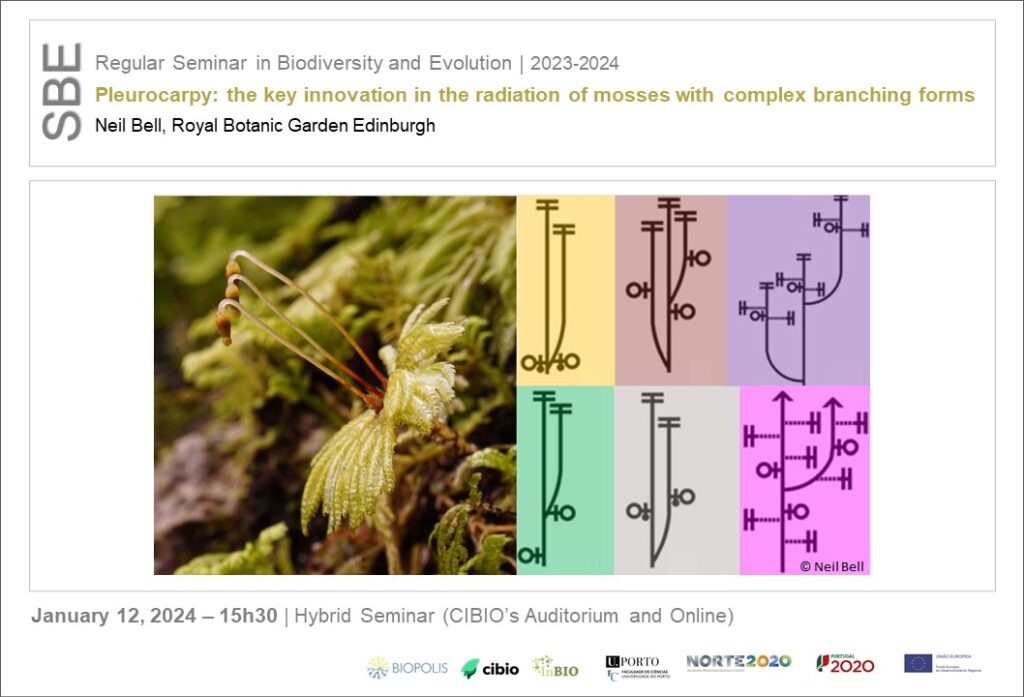Pleurocarpy: the key innovation in the radiation of mosses with complex branching forms
Neil Bell, Royal Botanic Garden Edinburgh
January 12, 2024 | 15h30 | Hybrid Seminar (Zoom Link: https://fc-up-pt.zoom.us/j/84429728251)

The new phylogenetic picture of land plants that has emerged within the last five years suggests that bryophytes (mosses, liverworts and hornworts) are a monophyletic group that diverged from tracheophytes (“vascular plants”) more than 500 million years ago. They represent a fundamentally different approach to life on land as complex photosynthetic organisms, being highly distinct from tracheophytes ecologically, physiologically and in their life cycles. They are also different developmentally in ways that impose constraints on their life-forms that have required key evolutionary innovations to circumvent in the most successful extant groups.
The mosses are the most diverse group of bryophytes with around 12,000 species globally, nearly half of which are pleurocarps. The pleurocarps have evolved a solution to the developmental constraint of having a single-cellular meristem that is destroyed by the production of gametangia. By morphologically decoupling vegetative growth from sexual reproduction, they have been able to evolve much more complex, intricately branched life forms that have in turn allowed them to colonise a wider range of habitats, especially as epiphytes. In this seminar we will explore exactly what pleurocarpy is and how the crystallisation of ordinal level phylogenetic taxonomy in the last two decades has provided critical insights into how it may have evolved. We will also examine the unusual diversity of pleurocarpous and proto-pleurocarpous life-forms found in the earliest diverging extant orders and discuss how the very latest phylogenomic results reveal that the branching order of these groups, and hence the precise sequence of evolutionary innovations that led to pleurocarpy, has still to be definitively resolved.
More information here